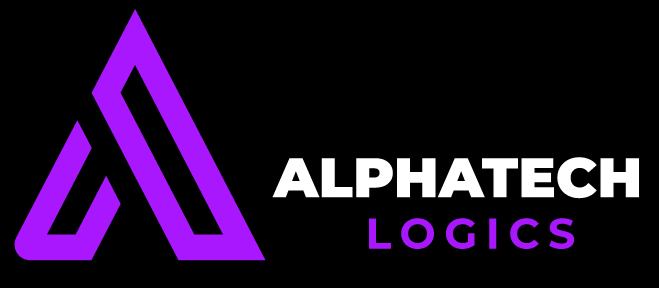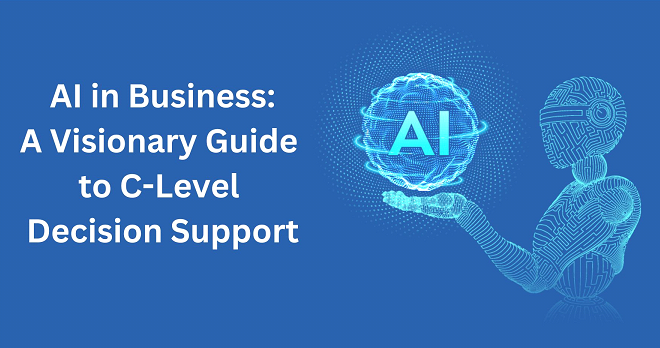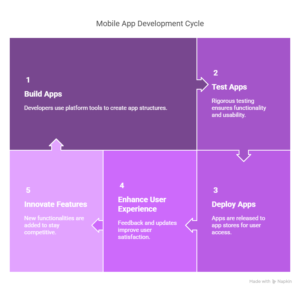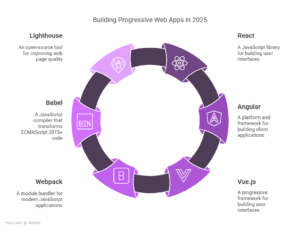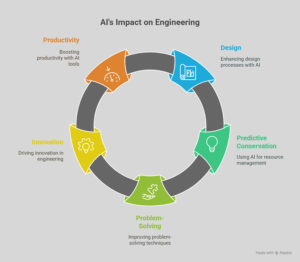AI in Business: A Visionary Guide to C-Level Decision Support
Introduction
Artificial Intelligence (AI) is no longer a futuristic concept—it’s a transformative force reshaping industries, optimizing operations, and revolutionizing decision-making at the highest levels of business. For C-level executives (CEOs, CFOs, CTOs, and other leaders), AI presents an unprecedented opportunity to enhance strategic decision-making, drive efficiency, and gain a competitive edge.
This guide explores how AI can empower C-suite leaders, the key applications across business functions, and actionable insights for integrating AI into corporate strategy.
Why AI Matters for C-Level Decision-Making
The modern business landscape is data-driven, fast-paced, and increasingly complex. Traditional decision-making models—relying on intuition and historical data—are no longer sufficient. AI augments leadership by:
Enhancing Predictive Capabilities – AI models analyze vast datasets to forecast market trends, customer behavior, and operational risks with high accuracy.
Automating Routine Decisions – AI-driven automation frees executives to focus on high-impact strategic initiatives.
Improving Risk Management – AI identifies potential threats (financial, operational, cybersecurity) before they escalate.
Personalizing Customer & Employee Experiences – AI-driven insights help tailor engagement strategies for better retention and productivity.
Key AI Applications for C-Suite Leaders
1. Strategic Planning & Market Intelligence (CEO, CMO)
AI-powered analytics provide real-time insights into industry shifts, competitor strategies, and emerging opportunities. Tools like natural language processing (NLP) scan news, reports, and social media to detect trends before they become mainstream.
Example: AI-driven scenario modeling helps CEOs assess the impact of mergers, expansions, or economic downturns.
2. Financial Forecasting & Risk Management (CFO, CRO)
⦁ AI enhances financial decision-making through:
⦁ Predictive cash flow analysis
⦁ Fraud detection via anomaly detection algorithms
⦁ Automated regulatory compliance checks
Example: AI-driven credit risk models help CFOs optimize lending strategies while minimizing defaults.
3. Operational Efficiency & Supply Chain Optimization (COO, CSCO)
AI improves logistics, inventory management, and production planning by:
⦁ Predicting demand fluctuations
⦁ Optimizing routes and warehouse operations
⦁ Detecting supply chain disruptions in real-time
Example: AI-powered predictive maintenance reduces downtime in manufacturing by anticipating equipment failures.
4. Talent & Workforce Optimization (CHRO)
AI transforms HR by:
⦁ Automating recruitment with AI-driven candidate matching
⦁ Predicting employee attrition risks
⦁ Personalizing learning & development programs
Example: AI chatbots streamline onboarding, while sentiment analysis tracks employee engagement.
5. Cybersecurity & Data Governance (CISO, CDO)
AI strengthens security by:
⦁ Detecting anomalies in network traffic
⦁ Automating threat response
⦁ Ensuring compliance with data privacy laws
Example: AI-powered behavioral analytics identify insider threats by monitoring unusual user activity.
Implementing AI in the C-Suite: Best Practices
Align AI with Business Goals – Start with clear objectives (cost reduction, revenue growth, risk mitigation).
Invest in Data Infrastructure – High-quality, clean data is the foundation of effective AI.
Foster Cross-Functional Collaboration – Break silos between IT, analytics, and business units.
Prioritize Ethical AI & Governance – Ensure transparency, fairness, and regulatory compliance.
Upskill Leadership & Teams – C-level executives must understand AI’s potential and limitations.
The Future of AI in Executive Decision-Making
As AI evolves, we can expect:
⦁ AI-powered “executive assistants” that synthesize reports, draft strategies, and simulate outcomes.
⦁ Hyper-personalized AI dashboards delivering real-time, actionable insights.
⦁ AI-augmented boardrooms where simulations and scenario testing drive consensus.
Conclusion
AI is not just a tool—it’s a strategic partner for C-level leaders. By integrating AI into decision-making processes, executives can navigate complexity with confidence, unlock new efficiencies, and lead their organizations into a smarter, more competitive future.The question is no longer whether to adopt AI, but how quickly and effectively businesses can harness its power. The visionary leaders who embrace AI today will shape the industries of tomorrow.

